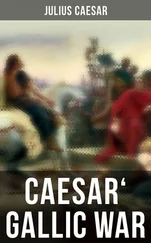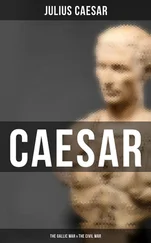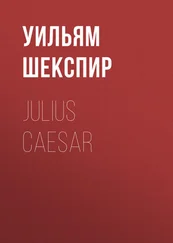Napoleon III - History of Julius Caesar Vol. 2 of 2
Здесь есть возможность читать онлайн «Napoleon III - History of Julius Caesar Vol. 2 of 2» — ознакомительный отрывок электронной книги совершенно бесплатно, а после прочтения отрывка купить полную версию. В некоторых случаях можно слушать аудио, скачать через торрент в формате fb2 и присутствует краткое содержание. Жанр: foreign_antique, foreign_prose, Биографии и Мемуары, на английском языке. Описание произведения, (предисловие) а так же отзывы посетителей доступны на портале библиотеки ЛибКат.
- Название:History of Julius Caesar Vol. 2 of 2
- Автор:
- Жанр:
- Год:неизвестен
- ISBN:нет данных
- Рейтинг книги:4 / 5. Голосов: 1
-
Избранное:Добавить в избранное
- Отзывы:
-
Ваша оценка:
- 80
- 1
- 2
- 3
- 4
- 5
History of Julius Caesar Vol. 2 of 2: краткое содержание, описание и аннотация
Предлагаем к чтению аннотацию, описание, краткое содержание или предисловие (зависит от того, что написал сам автор книги «History of Julius Caesar Vol. 2 of 2»). Если вы не нашли необходимую информацию о книге — напишите в комментариях, мы постараемся отыскать её.
History of Julius Caesar Vol. 2 of 2 — читать онлайн ознакомительный отрывок
Ниже представлен текст книги, разбитый по страницам. Система сохранения места последней прочитанной страницы, позволяет с удобством читать онлайн бесплатно книгу «History of Julius Caesar Vol. 2 of 2», без необходимости каждый раз заново искать на чём Вы остановились. Поставьте закладку, и сможете в любой момент перейти на страницу, на которой закончили чтение.
Интервал:
Закладка:
126
De Bello Gallico , VI. 13, et seq.
127
“The Gauls have poets who celebrate in rhythmic words, on a sort of lyre, the high deeds of heroes, or who turn to derision disgraceful actions.” (Diodorus Siculus, V. 31.) And he adds: “They have philosophers and theologians, who are held in great honour, and are named Druids (according to certain texts, Saronides ). They have diviners, whose predictions are held in great respect. These consult the future by the aid of auguries and the entrails of the victims; and, in solemn circumstances, they have recourse to strange and incredible rites. They immolate a man by striking him with a sword above the diaphragm, and they draw presages from the manner in which he falls, in which he struggles, or in which the blood flows. They authority of the Druids and bards is not less powerful in peace than in war. Friends and enemies consult them, and submit to their decision; it has often been sufficient to arrest two armies on the point of engaging.” – Strabo (VI., p. 164, edit. Didot) relates nearly the same facts. He makes a distinction also between the bards, the priests, and the Druids.
128
Ammianus Marcellinus (XV. 9) speaks as follows of the ancient Druids: “The men of that country (Gaul), having become gradually polished, caused the useful studies to flourish which the bards, the euhages (prophets), and the Druids had begun to cultivate. The bards sang, in heroic verse, to the sound of their lyres, the lofty deeds of men; the euhages tried, by meditation, to explain the order and marvels of nature. In the midst of these were distinguished the Druids, who united in a society, occupied themselves with profound and sublime questions, raised themselves above human affairs, and sustained the immortality of the soul.” These details, which Ammianus Marcellinus borrows from the Greek historian Timagenes, a contemporary of Cæsar, and from other authors, show that the sacerdotal caste comprised three classes – 1, the bards; 2, the prophets; 3, the Druids, properly so called.
129
Amédée Thierry, II. 1.
130
See Paulus Diaconus, p. 4, edit. Müller.
131
Diodorus Siculus, V. 29.
132
De Bello Gallico ; III. 22.
133
Cæsar mentions the names of ten kings: 1. Catamantalœdes, among the Sequani (I. 3); 2. Divitiacus and Galba, among the Suessiones (II. 4, 13): 3. Commius, among the Atrebates (IV. 21, 27, 35; V. 22; VI. 6; VII. 75, 76, 79; VIII. 6, 7, 10, 21, 23, 47, 48); 4. Catuvolcus, among the Eburones (V. 24, 26; VI. 31); 5. Tasgetius, among the Carnutes (V. 25, 29); 6. Cavarinus, among the Treviri (V. 54; VI. 5); 7. Ambiorix, among the Eburones (V. 24, 26, 27, 29, 38, 41; VI. 5, 6, 19, 29, 30, 31, 32, 42, 47; VIII. 24, 25); 8. Moritasgus, among the Senones (V. 54); 9. Teutomatus, among the Nitiobriges (VII. 31, 46).
134
De Bello Gallico , VII. 88; VIII. 12.
135
De Bello Gallico , I. 16.
136
Thus the Civitates Armoricæ (V. 53; VII. 75; VIII. 81); Belgium (V. 12, 24, 25; VIII. 46, 49, 54; the Aulerci Cenomanni and the Aulerci Eburovices (II. 34; III. 17; VII. 4, 75; VIII. 7). See the interesting memoir by Mr. Valentino Smith.
137
Ambarri, necessarii et consanguinei Æduorum (I. 11); Suessiones fratres consanguineosque Remorum, qui eodem jure et iisdem legibus utuntur (II. 3); Suessiones qui Remis erant adtributi (VIII. 6).
138
In fide ; thus the Ædui with the Bellovaci (II. 14); with the Senones (VI. 4); with the Bituriges (VII. 5).
139
Eburonum et Condrusorum, qui sunt Trevirorum clientes (IV. 6); Carnutes … usi deprecatoribus Remis, quorum erant in clientela (VI. 4); imperant Æduis atque eorum clientibus Segusiavis, Ambluaretis, Aulercis Brannovicibus, Brannoviis (VII. 75)
140
The known federations of this kind are – 1, that of the Belgæ against the Romans, in the year 57 before Jesus Christ ( De Bello Gallico , II. 4); 2, that of the Veneti with the neighbouring tribes, in the year 56 ( De Bello Gallico , III. 9); 3, that of the Treviri, the Nervii, The Aduatuci, and the Menapii, in the year 53 ( De Bello Gallico , VI. 2); 4, that of the peoples who invested Camulogenus with the supreme power, in 52 ( De Bello Gallico , VII. 57); 5, the great federation which placed all the forces of Gaul under the command of Vercingetorix ( De Bello Gallico , VII. 63).
141
De Bello Gallico , VI. 11.
142
De Bello Gallico , VI. 11.
143
De Bello Gallico , V. 3, 54; VI. 11; VII. 75; VIII. 22.
144
De Bello Gallico , I. 30.
145
De Bello Gallico , VII. 63.
146
De Bello Gallico , VI. 11.
147
De Bello Gallico , VI. 12.
148
De Bello Gallico , VII. 4.
149
Précis des Guerres de César , by the Emperor Napoleon I., p. 53, Paris, 1836.
150
The hostility which prevailed between the Sequani and the Ædui was further augmented, according to Strabo, by the following cause: “These two tribes, separated by the Arar (the Saône ), both claimed the right of tolls.” (Strabo, p. 160, edit. Didot.)
151
“Divitiacus, introduced to the Senate, explained the subject of his mission. He was offered a seat, but refused that honour, and pronounced his discourse leaning on his buckler.” (Eumenius, Panegyric of Constantine , cap. 3.)
152
De Bello Gallico , VI. 12.
153
The limits of Illyria, in the time of Cæsar, are hardly known; yet it appears that this province comprised the modern Istria and part of Carniola. Aquileia was its capital, situated at the head of the gulf of the Adriatic Sea, not far from the Isonzo. In fact, Strabo (I., p. 178) says that Aquileia was situated without the frontiers of the Veneti, in whose territory this town was included under Augustus. On another side, Titus Livius (XXXIX. 55) informs us that the colony of Aquileia had been founded in Istria; and Herodotus (I. 196), as well as Appian, reckons the Istrians among the peoples of Illyria.
154
“Molita cibaria.” ( De Bello Gallico , I. 5.)
155
Inhabitants of the country of Bâle. The Rauraci inhabited the diocese of Bâle, which was called Augusta Rauracorum .
156
Inhabitants of the south of the Grand Duchy of Baden. The town of Stulingen, near Schaffhausen, is believed to derive its name from the Tulingi.
157
De Bello Gallico , I. 3, 4, and 5. – Scholars have taken great pains to determine the concordance between the ante-Julian calendar and the Julian calendar; unfortunately, the results at which they have arrived are very imperfect. We have asked M. Le Verrier to solve this difficult problem, and we owe to his courtesy the tables placed at the end of this volume. ( Appendix A. )
158
The bed of the Rhone has changed at several points since the time of Cæsar; at present, according to the report of those who live on its banks, there are no fords except between Russin, on the right bank, and the mill of Vert, on the left bank. ( See Plate 3. )
Читать дальшеИнтервал:
Закладка:
Похожие книги на «History of Julius Caesar Vol. 2 of 2»
Представляем Вашему вниманию похожие книги на «History of Julius Caesar Vol. 2 of 2» списком для выбора. Мы отобрали схожую по названию и смыслу литературу в надежде предоставить читателям больше вариантов отыскать новые, интересные, ещё непрочитанные произведения.
Обсуждение, отзывы о книге «History of Julius Caesar Vol. 2 of 2» и просто собственные мнения читателей. Оставьте ваши комментарии, напишите, что Вы думаете о произведении, его смысле или главных героях. Укажите что конкретно понравилось, а что нет, и почему Вы так считаете.












